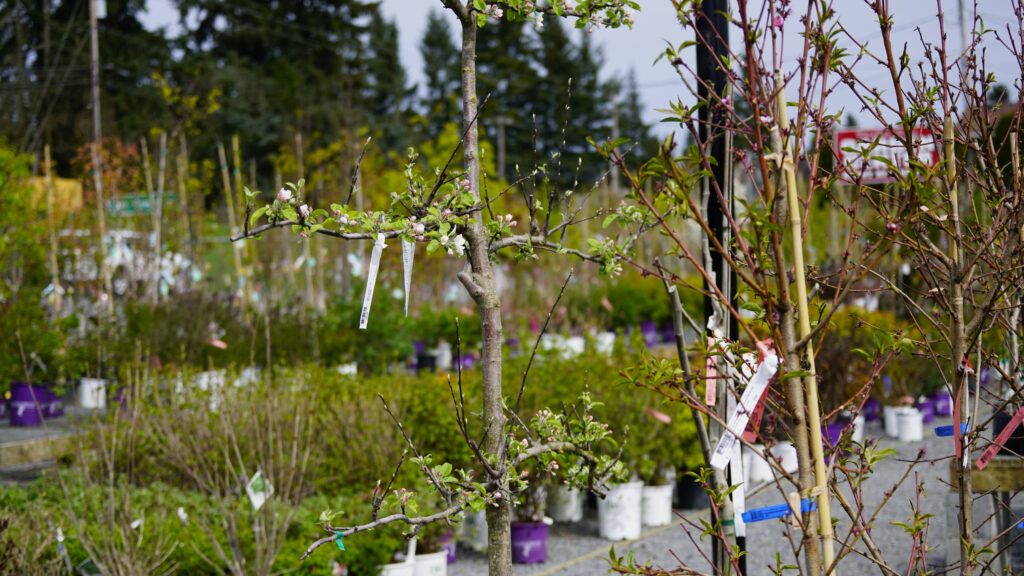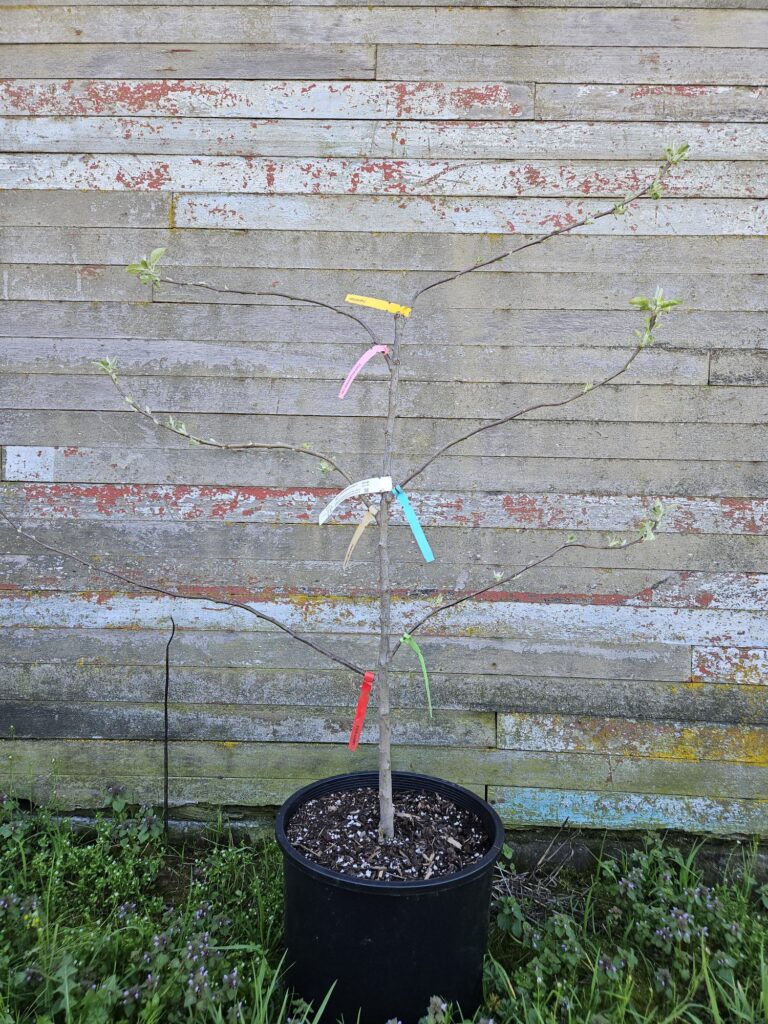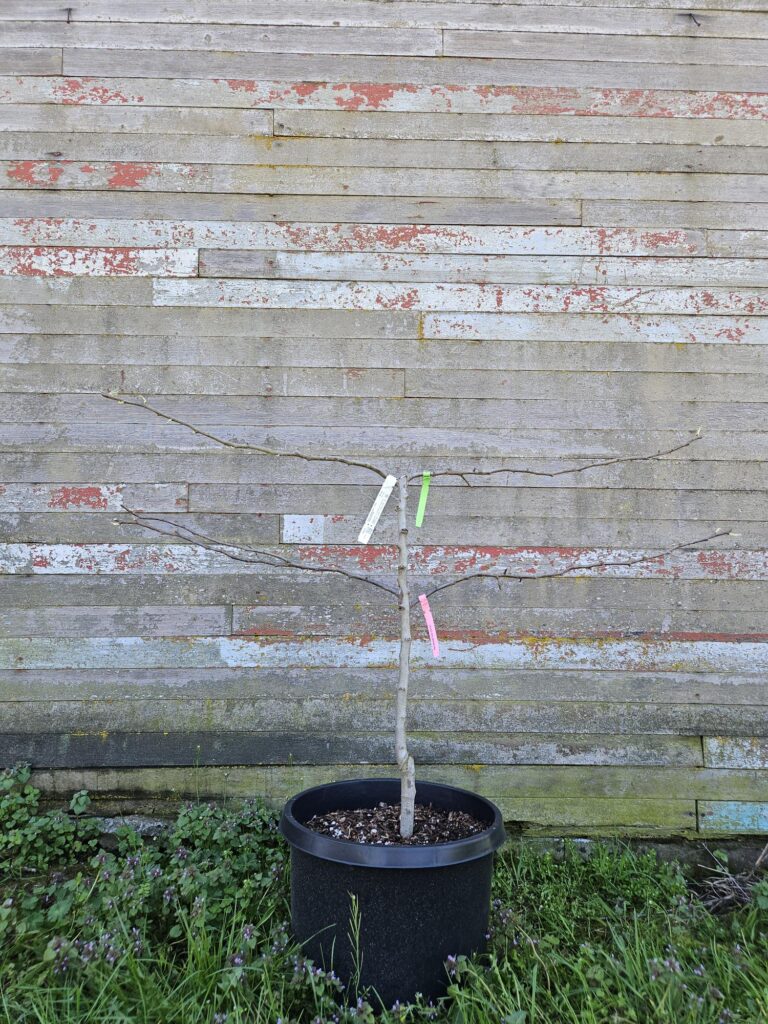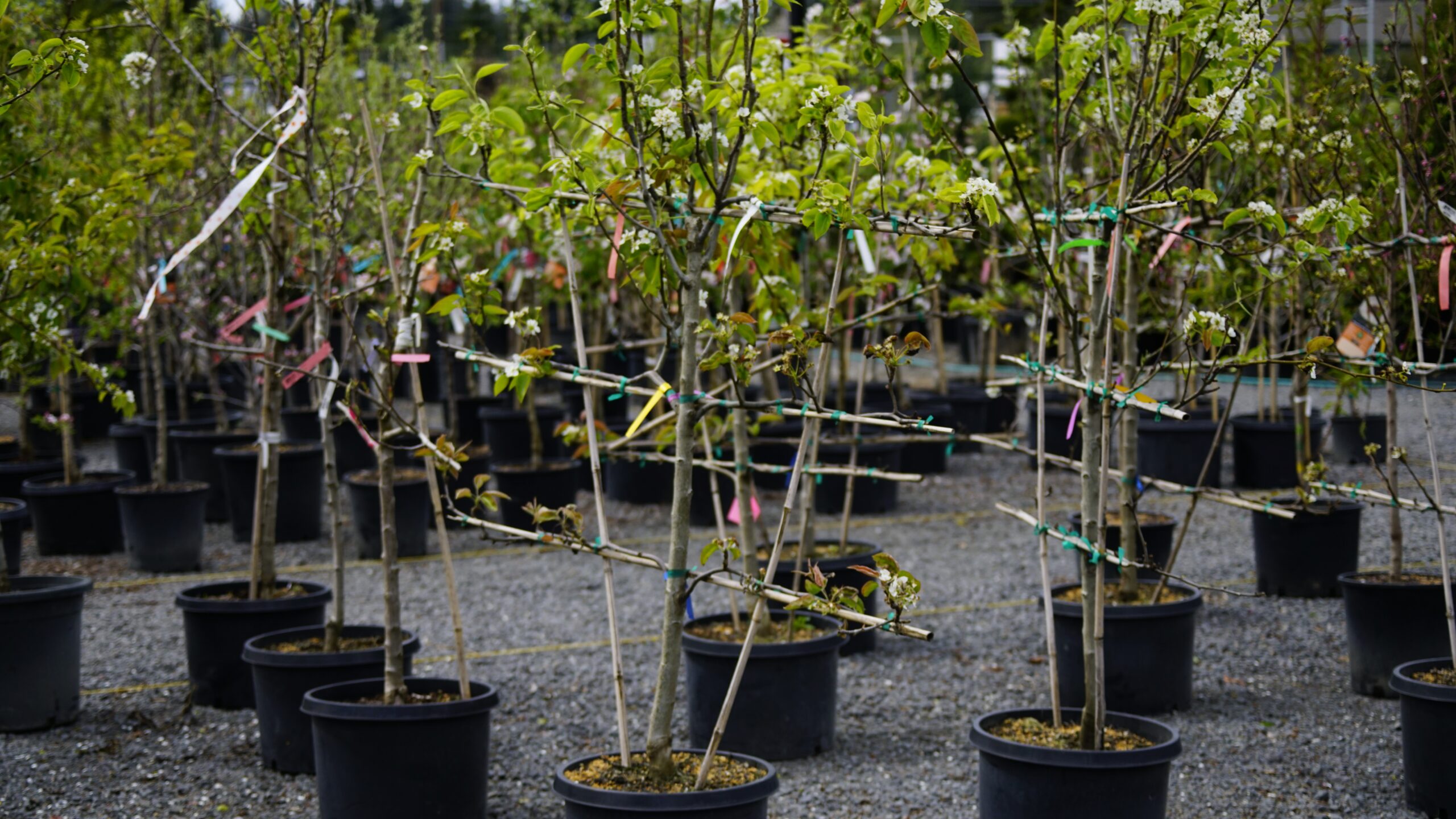Espaliers are multitasking space-savers in the garden. By using the vertical plane, they multiply your available growing space — letting you fit in more plants, which is always a good thing. They can form a privacy screen on a support or elevate a drab wall.
Fruiting trees are a popular choice for easy-to-reach harvests, but many flowering or evergreen plants with flexible branches make beautiful espaliers. In design, they can be simple or artfully woven. Ahead experts share their favorite ways to use this crafty technique.
“Espalier” is a French word meaning to train a woody tree or shrub flat against a wall or support, but the practice may go as far back as ancient Egypt, where paintings from 1400 BCE illustrate espaliered figs.
“The most surprising thing to learn about espalier fruits is they aren’t as intimidating as one may think,” said Libby Simmons, of Portland Nursery.
“All you really need is a good plan or vision, pruning techniques, and some good old patience. Once you learn the pruning practices, it just becomes more of a maintenance schedule.”
Sarah Nash, buyer for Paradise Acres Nursery in Damascus agrees, saying, “The tree is much smaller, so it is much easier to notice pests and diseases and to treat the problems, and no ladder is needed for picking the fruit!”
She notes they are customizable in style to your home, and said, “Espalier fruit trees are a perfect way to add interest to an unsightly structure or create a living producing wall.”
Advantages of espalier training
There are many advantages and opportunities for creativity with espaliers. Not only can you save space, but some nurseries carry multi-grafted mature espaliers allowing you to grow multiple varieties or even fruit in the space of one. Tending to an espalier also can be very calming and meditative, Simmons said.
“Homeowners and gardening enthusiasts are intrigued by the idea and possibilities to sculpt and shape espalier fruit trees as they grow,” Simmons said. “I feel there’s a level of personal creativity and ownership pride that comes with maintaining espalier fruit trees.”
You can make a diagonal lattice, or a “fence” of any height you need. Christie Mackison, co-owner of Central Point’s Shooting Star Nursery said, “We have even seen what they call ‘stepovers’ in England — an espaliered fruit tree with just one level of branching that can be grown in a raised bed and ‘stepped over’”.
How much space do they save? While standard fruit trees need about 15 feet between them and about 10 feet from buildings, Nash said, “An espalier can be planted a couple feet from a fence or building and as close as 4 to 5 apart.”

Structure
Espaliers can be trained on walls, fence posts, or lattice work. 12-gauge galvanized wire is often used, held by eye bolts with turnbuckles to keep the wire taught.
The most common forms are cordon, horizontal from a single trunk (in one or multiple tiers); palmetto verrier, a stylized U-shape; fan, at a 45-degree angle; candelabra; Belgian fence, a woven lattice of three or more espaliers, and informal, or natural style.
Maintenance
As living works of art, espaliered plants need regular training and trimming in addition to consistent watering. Simmons said they typically require pruning twice, in the dormant period and summertime.
With fruit trees, Simmons said training your tree when young helps the tree build stronger branches and produce fruit at a younger age.
“Winter or early spring pruning is for structural maintenance, removing vertical shoots, cross branching, or waterspouts coming up from the base of the tree,” said Simmons, while summer pruning restricts growth and increases light for the fruit to develop and ripen. On younger apples and pears, summer pruning also helps encourage stronger structure and early fruit bud formation, she said.
Nash recommends consulting your local nursery or Oregon State University Extension experts for detailed pruning information.
Choosing a plant variety and style
“The easiest way to work with an espalier tree,” said Mackison, “is to get one already trained or look for a small bare-root tree with flexible branching that you can work with. Choosing 4-6 branches to start training horizontally is ideal.”
Among fruit trees, experts agree that apples and pears are two of the best for your first espalier, because they fruit on long-lived “spurs” so require less specialized pruning than some other varieties. And, Simmons said they are less disease- and pest-prone here than some other fruit trees. They prefer a spot with “moist, well-drained, loamy soil with a neutral PH of around 6.5, full sun, and good air circulation.”
Apples and pears fruit best with two varieties to pollinate each other. Premade multi-grafts will have chosen varieties that flower at complimentary times, but you’ll need to research if making your own. For pears, Mackison recommends ‘Comice,’ ‘Barlett,’ and Asian Pears. One exception is self-fertile ‘Pink Lady’ apple, she notes, which can be planted solo.
“My favorite variety for the Pacific Northwest,” Simmons said, “is an apple 3-way or 3-tiered, ‘Gala,’ ‘Honeycrisp,’ and ‘Fuji’. This combo really delivers a sweet array of delicious flavors and great producing fruits. She also likes a ‘Bartlett’ and ‘Bosc’ 2-tier pear.


Beyond fruit trees
There are countless options beyond fruit trees for beautifying your yard with an espalier, from trees and shrubs to vines. The ideal candidates will have flexible branches when young.
Some ideas include flowering crabapples (Malus), flowering quince cultivars (Chaenomeles), forsythia, holly, magnolia, Pyracantha, Pfitzer juniper (Juniperus chinensis ‘Pfitzerana’), some viburnums, winged euonymous, and witch hazels (Hamamelis), according to the University of Wisconsin-Madison’s Extension office.
Simmons recommends several favorite evergreen espalier plants carried at Portland Nursery. Star jasmine (Trachelospermum jasminoides) is not a true jasmine, but an evergreen, compact trailing vine with repeat-blooming fragrant white flowers in summer. Needing some structural support, it’s easy to train and grows about 1-2’ a year, topping out at 10-12’.
Camellia ‘Sansanqua’, or winter-blooming camellia is another popular choice for evergreen appeal in a partial-shade spot shielded from afternoon sun. For winter bloomers, choose ‘Yuletide,’ or ‘Setsugekka.’ Simmons’ favorite is hybrid ‘Fairy Blush,’ a compact grower to 4-5’ with pink lightly-scented flowers in April.
Pyracantha coccinea, aka scarlet firethorn, is semi-evergreen, but offers multiple seasons of interest and feeds the birds. Smothered in white blooms in spring, it returns for a fall encore with long-lasting red-orange berries.
Ligustrum japonicum or wax leaf privet is “easy to shape, shear, and maintain, making it a perfect choice for areas you would like to create a living wall.” Its cone-shaped white summer blooms support pollinators, too.
Which will you choose for your living walls?
Erica Browne Grivas is an award-winning journalist and gardener pushing zone boundaries in Seattle, Washington. She can be reached at EBGrivas@Gmail.com.

